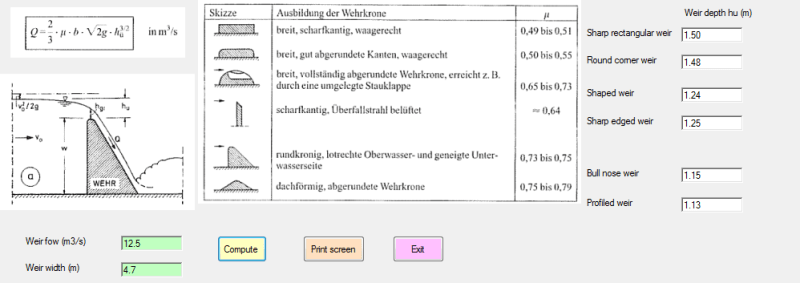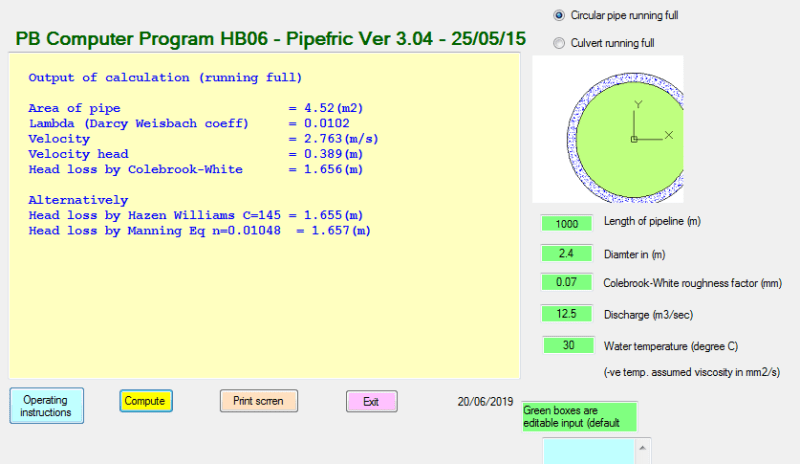I have just looked at this thread and offer the following observations.
(a) The boiling effect of the seawater upstream of the weir is an indication the weir has been undersized. Air could be released if flow were fast and not properly streamlined. In general one needs a stilling basin upstream of the seal weir and the existing one does not seem to have no such consideration.
(b) Answer to "function of the weir within the outfall basin" - A seal weir is always provided to control the hydraulic system. The key requirement is to ensure the discharge upto and before the seal weir is "fully submerged" to effect a full bore flow. Therefore the pump for the discharge system has a guaranteed datum to work against. This is the most efficient way of arranging a discharge. If the flow changes between an open channel and full bore flow the pump will not operating at a steady duty point, energy will be wasted and the pump degrades over time.
(c) An outfall system is always designed for the maximum sea level. The current one-year maximum of HHWL at 52.25m need to be revisited. I would find a nearby tide level gauge station and download at least the last 30 years records to get the highest possible level to check it against the local HAT and use whichever the higher.
(d) Answer to "ways to increase the driving head needed to overcome the high water level". This answer has two parts. Part 1 is water will have a level upstream of the weir determined by nature when the Froude number is 1. Nobody can change this.
Therefore if your existing weir is unchanged the water upstream of the weir has to be around 1.5m or probably higher due to the unsteadiness without the stilling basin provision. Thereafter if the water downstream the weir never rise above the weir level then your weir is adequate. If the system is inadequate the downstream level can rise above the weir level and the weir will have to work in a submerged condition.
At the moment with a HHWL at 52.25 there is a head difference of 57-52.25 = 4.75m between the seal weir and the highest high water level. Whether this is enough depends on the length, profile, condition and arrangement of the 2.6m Bonna pipe. I did a quick calc assuming the 2.6m pipe has 0.1m marine growth (so the effective diameter is 2.4m) over a distance of 1km (say) without any other other secondary losses using a nominal roughness factor and got 1.6m head loss overall.
Since the head difference is significantly higher therefore the flow in the 2.6m Bonna would be initially open channel and becomes full bore flow after passing the HHWL. Lots of air could be trapped in the 2.6m Bonna making the flow erratic and difficult to predict.
My gut feeling is the existing weir level should work for the 12.5m3/s or 45,000m/h flow.
I you raise the seal weir level you will change slightly the design of the pressurized system upstream and that can be considered if you have a submerged weir condition. However in your latest modification you now have two seal weirs and a common pit and that should improve things.
(e) Lastly regarding extending the existing pit wall my recommendation is do it with non-corrosive materials. Since there is no water to be impounded you can just erect a watertight plastic screen around the existing pit using stainless steel fixing and brackets. You can sell this idea to the owner that reducing the water spray is crucial to reduce the degradation of the surrounding infrastructure and the equipment of the plant. Visually the seal weir pit has already suffered from the chloride attack so a watertight screen, robust against the worst wind load, of at least 1.5m height above the existing pit wall can contain the seawater spray and allow remedial work to be carried out on the exposed seal weir walls.
(f) Finally I notice it is your intention to cut out a portion of the the 90-degee Bonna pipe bend to form a new common pit. It would be essentially to ensure the original pipe is not damaged and the steel liner is fully sealed afterward and if required reinforced after the modification. If the mortar inner lining of the Bonna pipe is damaged and washed away by the hydraulic action this can lead to a progressive loss of the inner lining exposing the thin steel liner to corrosion. By which time the Bonna pipe would be in danger.
My information should serve as sanity checks against your own design.
I can't answer your last question as your link does not work. Vent is provided should be for the pipeline upstream of the seal weir. Trapped compressed air is a common problem of a badly design hydraulic system.


